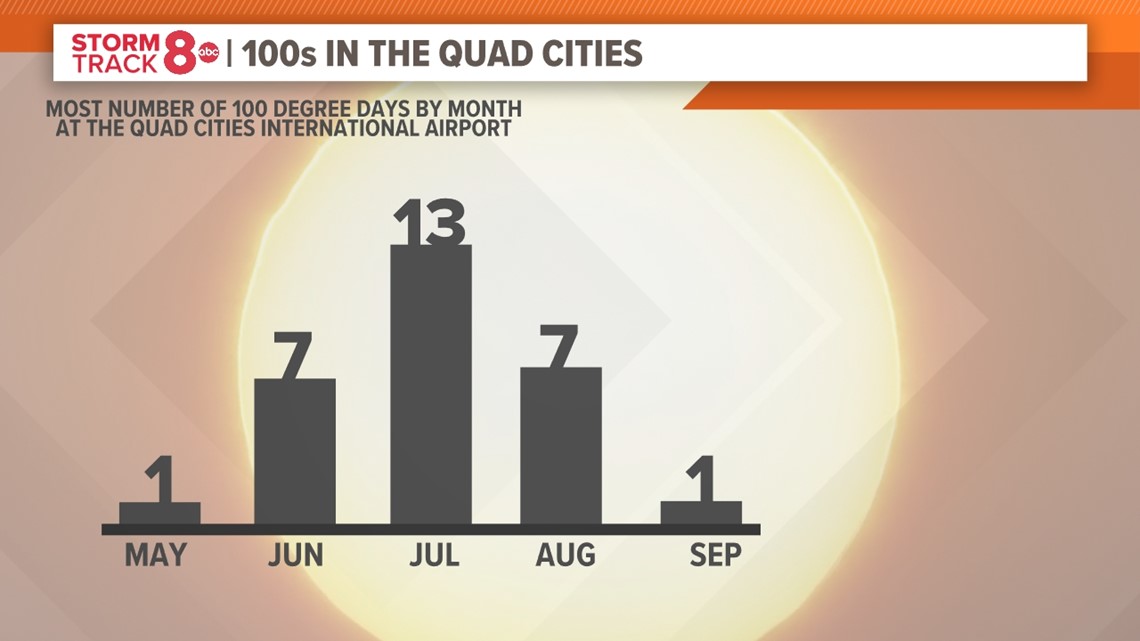MOLINE, Ill. — By now you've likely seen the headlines regarding the impressive heat dome that has established itself across the southwest portion of the United States. Some areas have even broken records in terms of the number of days above 100 and even 110 degrees. While not uncommon, it is summer after all, the duration is quite impressive for that region. Here in the Quad Cities, it's a bit more difficult to see temperatures reach the 100-degree mark, let alone past it. However, it's not impossible and we even have the opportunity to come close to triple-digit heat by the end of July. So, just how uncommon is this type of heat here? Let's dig in!
It's been 4,012 days since the Quad Cities saw its last temperature reading in excess of 100° with a high of 101° that afternoon. No surprise it was in July, July 25, 2012, to be exact. It also occurred during a July that saw very little in the way of rainfall, with a total of only 0.46" for the month! You'll find the majority of our 100-degree days were located within drought periods in the Quad Cities.
Why 100-degree temperatures are harder to achieve in the Quad Cities
The biggest factor? Moisture levels. The more moisture in the air, the harder it is for impressive heat to build in. Water has more thermal mass than air, meaning it can store more heat, but it also takes more energy to heat that humid air compared to dry air. Where does that moisture come from during the summer months? Two sources, the Gulf of Mexico and evapotranspiration. Both of these sources make it harder to achieve such high temperatures.
This isn't the case for the desert southwest where the air is already much drier compared to that of the Midwest, allowing for greater fluctuations in temperature.
Breaking down the 100-degree day potential by month, it's a very even distribution.


July takes the top spot which is again, no surprise. However, on both sides of this top spot, there are an equal number of days for May, September, June, and again in August. Quite a neat trend!
Some of the longest stretches of consecutive 100-degree days are:
1936: 11 days (also, a big drought year)
1931: 8 days
1934: 7 days
1916: 6 days
1901: 5 days
1988: 5 days
1983: 3 days
Notice how none of these stretches have been anything recent!
Have a question that you would like me to answer for an upcoming Ask Andrew segment? Submit it, here!

